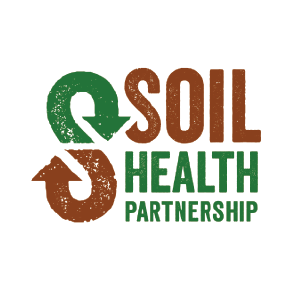5 Ways to Evaluate the Health of Your Soil
Read Time: 5 minutes
By Soil Health Partnership
There are three main types of soil health indicators: chemical, biological and physical. While soil testing through a laboratory is required to determine many of these, there are ways to assess certain indicators of soil health at home.
Here are five ways you can evaluate your fields to determine if your soil is healthy:
- Water infiltration
Use a water infiltration kit, if you have one. Otherwise, you can observe how much standing water there is after a rainstorm. While infiltration rates can vary based on soil texture, it can also vary because of issues like compaction, low soil aggregate stability or low organic matter.
- Soil aggregate stability, slump test or slake test
Perform a slump test or a slake test to evaluate the soil aggregate stability. Soil that falls apart in water or completely loses shape has poor aggregate stability, which indicates lower organic matter and less “biological glue.”
- Smell
Soils should have a pleasant earthy odor. Soils that have a strong, off-putting or sulfur-like smell can indicate poor drainage or lack of oxygen in the soil.
- Erodibility
Observe the amount of residue on soils. More residue should protect soil from wind or rain. Rills and channels in soils, as well as soil color, can indicate erosion occurring in your field.
- Check root health at multiple stages
Sickly plants can occur when there is compaction in the soil because root development is slowed. Digging up plants to observe the size, shape, direction and color of roots can show issues with compaction. Root health may also indicate water infiltration, as slow growth can occur when soils are too wet.
Evaluate these indicators multiple times throughout the growing season. Take photos and document changes over time.
The earlier you assess your soil, the earlier you can develop strategies to improve it. These indicators are just part of a systematic approach to improving soil quality.
Check out these links to learn more about soil health indicators:
- SHP Resource – Soil Health Indicators
- Soil Sessions Webinar – Soil Health Indicators
- SHP’s Soil Sampling Process
As part of Cargill’s efforts to support farmers on their soil health journey, we aim to ensure that you have the practical information you need. One of the ways we plan do this is in collaboration with the Soil Health Partnership (SHP). SHP has built a unique network of farms where they test, measure and share results of progressive farm management practices that can enhance soil health and farm economics. Cargill will share articles, business cases and other resources from SHP with the hope that the insights you garner will benefit your operation. Please read on to learn more.

Soil Health Partnership
Soil Health Partnership is a program of the National Corn Growers Association (NCGA). Our mission is to promote the adoption of soil health practices in agriculture for economic and environmental benefit. To learn more about SHP’s work, visit soilhealthpartnership.org.
